AL ASAD AIRBASE, Iraq (Army News Service, Feb. 17, 2010) -- U.S. Army paratroopers took a first step toward a combined U.S. - Iraqi airborne training exercise when 183 paratroopers jumped onto Iraqi soil here Feb. 12 as part of their sustained airborne training.
Paratroopers with 1st Brigade, 82nd Airborne Division (Advise and Assist), began "currency jumps" to refresh their airborne skills following weeks of ground-based refresher courses in a bid to partner with Iraqi security forces during combined airborne training exercises.
"This is a really important day for the paratroopers of the 504th Parachute Infantry Regiment," said Col. Mark R. Stammer, commander of 1/82 AAB, referring to the legacy regiment of his brigade. "More importantly, it's an important first step in a training evolution for the Iraqi armed forces."
"We're training today to refresh ourselves on airborne safety procedures so that after the elections, we can train with our Iraqi army partners and conduct a combined airborne training operation with them here," he said.
Stammer said the combined training will allow U.S. and Iraqi forces to share not only the camaraderie of being paratroopers, but also the capability and capacity of a modern military force; another stone in the foundation of an enduring strategic partnership.
Stammer led the operation from the front as the first out the door of the C-130 aircraft, but not without a little humor.
"I still like it; that's why I go first," he said.
Conditions were nearly ideal for the training exercise, with mild winds and temperatures, and high visibility, according to Sgt. 1st Class Bryan Caldwell, noncommissioned officer in charge of airborne operations for 3rd Battalion, 319th Airborne Field Artillery Regiment, and drop zone safety officer.
Caldwell, who has conducted partnered airborne operations with other countries, said he has few concerns for the upcoming combined jumps with the Iraqis.
"A paratrooper's a paratrooper," said Caldwell.
"Once they get in the bird and they get parachutes on, it doesn't matter where you are from or where you've been - it's what you are doing at the moment," he said. "The Iraqis are trained paratroopers. I think we'll come together in the bird when it's time and see something amazing."
Command Sgt. Maj. William Johnson, the top noncommissioned officer for U.S. Division-Center, said that the ground was harder than the paratroopers were expecting, but their airborne training instincts kicked in to ensure safe landings.
"We're going to train the Iraqis up just like we trained the 82nd paratroopers to get back into currency," said Johnson. "Then, we'll do a combined jump. It's going to make their army even better."
The training exercise continued smoothly with no major incidents, according to Sgt. 1st Class William Johnson, noncommissioned officer in charge of airborne operations for 1/82 AAB and the person responsible for planning all the events.
After the second jump, the paratroopers were an hour ahead of schedule and by the end of the exercise, 183 jumpers had parachuted onto a drop zone, with only one mild injury, a slight concussion.
"Seeing the first 20 guys load up, it was like seeing the tip of the iceberg to all the hard work we've done to make this happen," said Johnson.
The exercises are the first large-scale training jumps in Iraq since the beginning of the war, according to Command Sgt. Maj. Frank Grippe, the top noncommissioned officer of I Corps and the second paratrooper to jump from the first aircraft.
"As a unit, we're able to not only train ourselves but as a goal, do a partnered parachute jump with our Iraqi allies here in the not-too-distant future," said Grippe.
"It's just another metric that we're winning the fight here and that we're continually professionalizing Iraqi security forces," he said.
Two years ago, al Anbar province was considered too dangerous to conduct training jumps, and combined airborne training with Iraqi security forces was out of the question, according to 1st Sgt. Scott Thomas of Company C, 1st Battalion, 504th Parachute Infantry Regiment. His paratroopers will participate in the second of three training jumps.
"It was at the tail end of the Anbar Awakening, and I remember we had an active al Qaeda [in Iraq] cell nearby," said Thomas, a former scout platoon sergeant for 2-504th Parachute Infantry Regiment operating in the vicinity of al Asad in 2007.
The Iraqi army was not ready back then, he said, but they are now.
(Spc. Michael J. MacLeod and Spc. Kayleigh J. Cannon write for 1/82 AAB, USD-C)



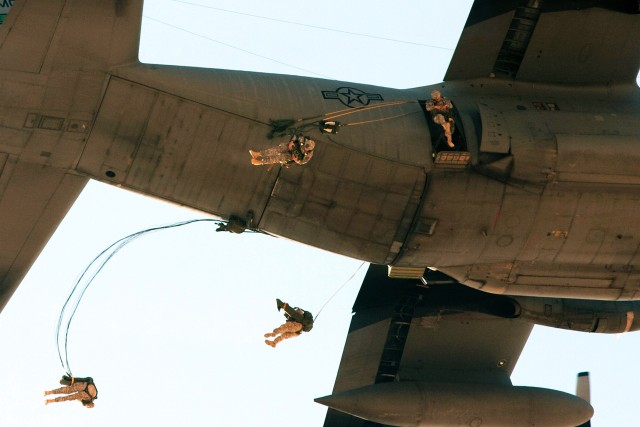
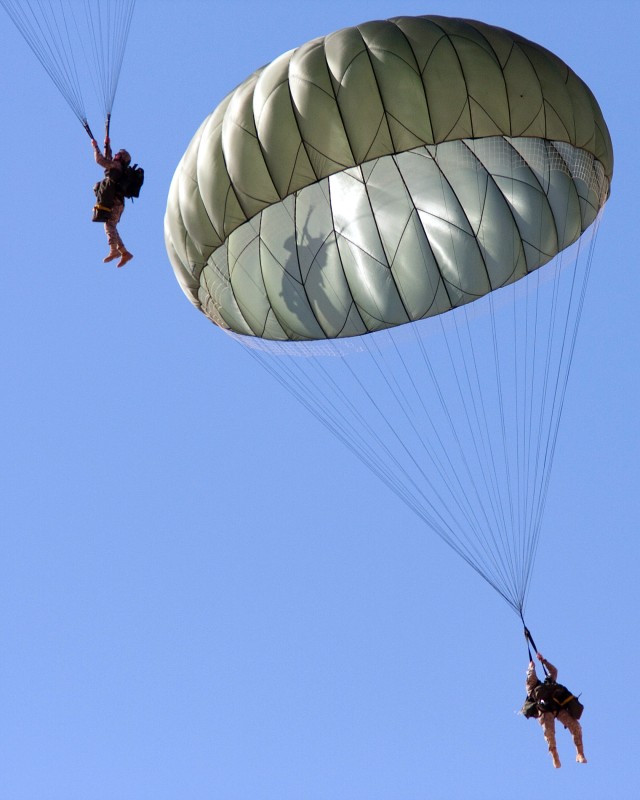
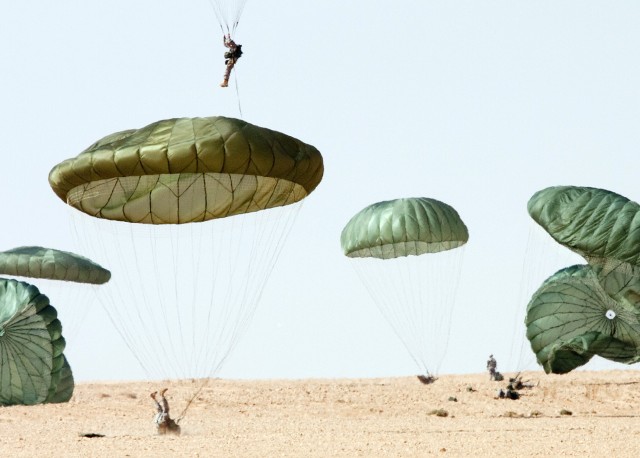
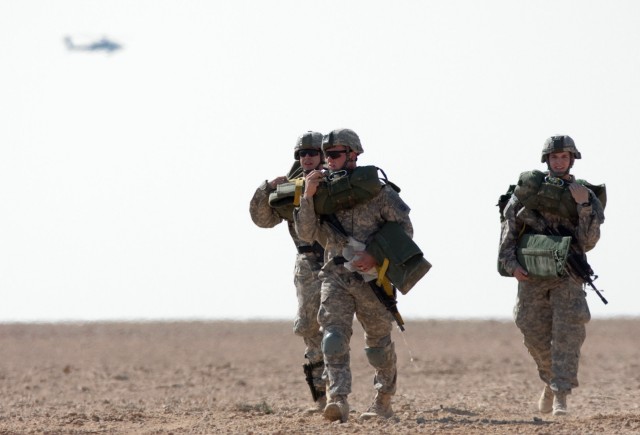


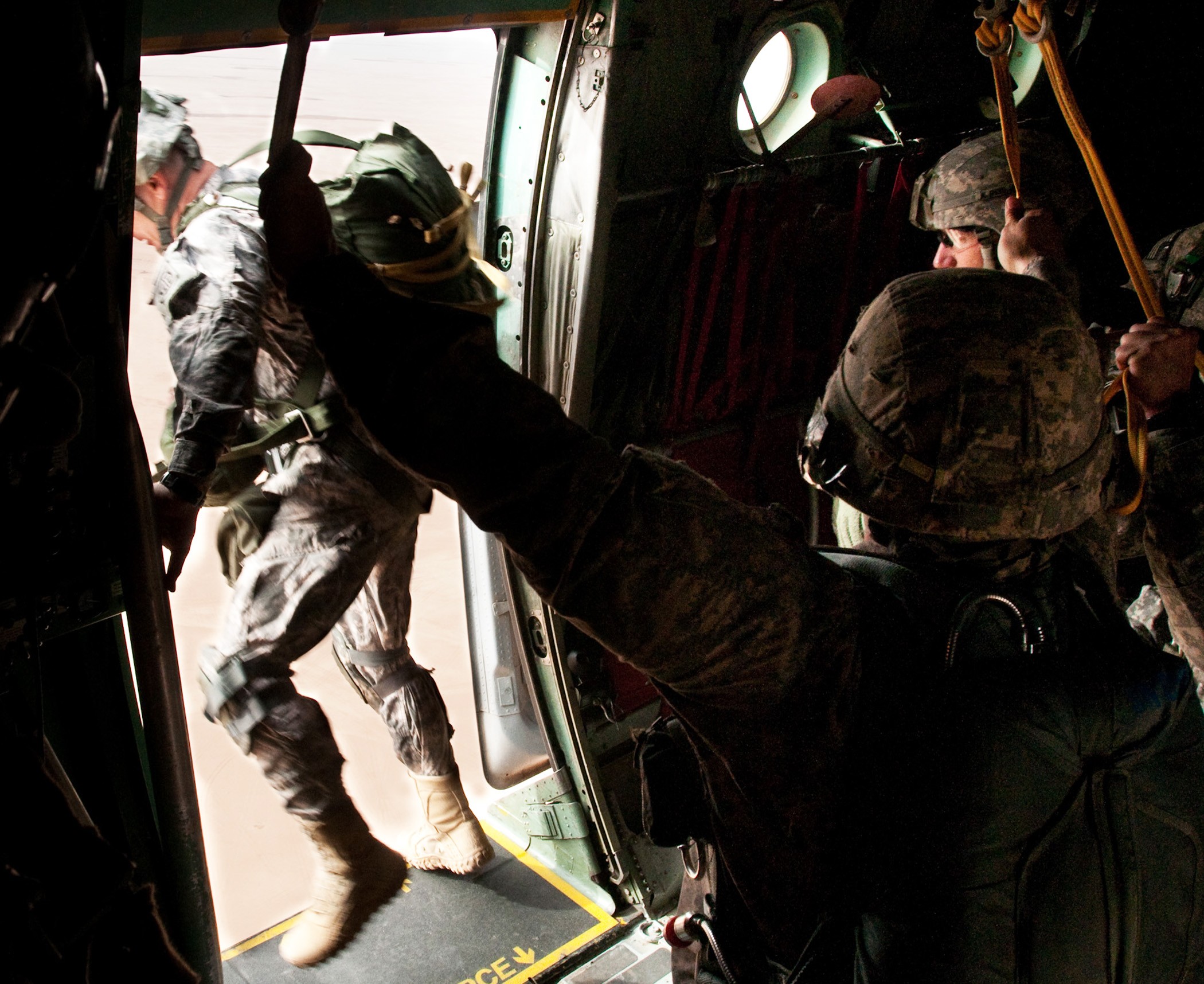




Social Sharing